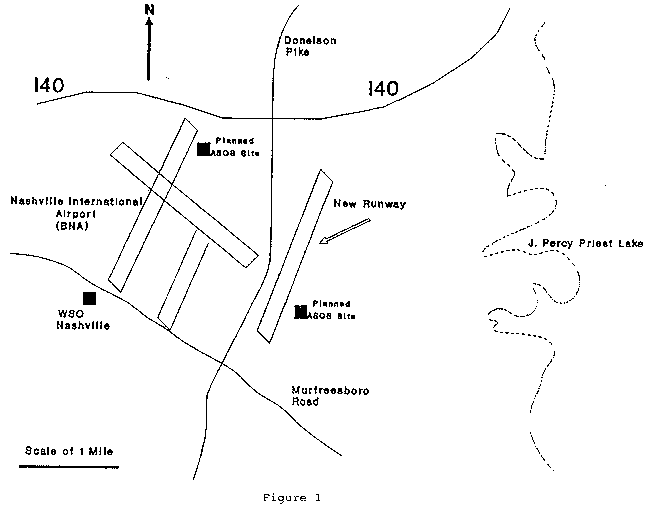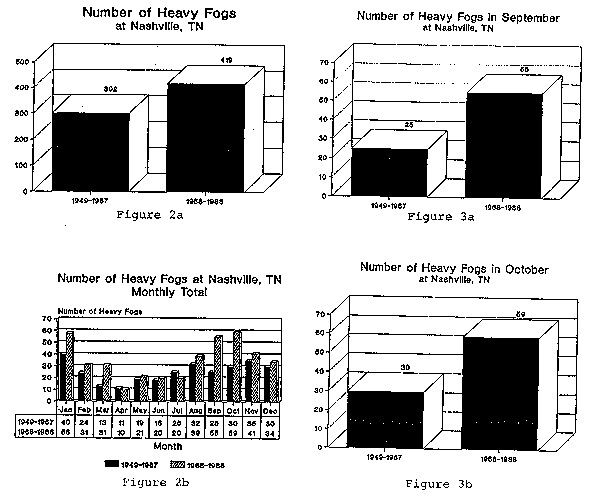Nashville, TN
Weather Forecast Office
Bobby Boyd
NWSO Nashville, TN
1. Introduction
Heavy fog has an impact on both aviation weather and community activity. This study was undertaken to determine what impact the impoundment of J. Percy Priest Lake had on the Nashville Airport area (Figure 1).
2. Methodology
Heavy fog data for this study was collected from the Local Climatological Data Monthly Summaries for Nashville for the period from 1949 to 1988. "Heavy fog" is defined as fog which reduces visibility to less than 1/4 mile.
3. Findings
The number of heavy fogs at Nashville has increased since the impoundment of J. Percy Priest Lake in September, 1967 (Figures 2a and 2b). From 1949 to 1967, there were 302 heavy fog events. From 1968 to 1988, 419 events occurred. The number of heavy fogs increased by 39 percent in the latter period.
The most notable increase comes in late summer and fall. When we combine the monthly data for September and October (Figures 3a and 3b), we find that more than twice as many heavy fog events occurred from 1968 to 1988 as did from 1949 to 1967.
4. Conclusions
Terrestrial radiation fog is most frequent in late summer and early fall. The nearness of J. Percy Priest Lake to the Nashville International Airport provides for an excellent moisture source for radiation fog to form.
One of the two planned ASOS sites was selected near the J. Percy Priest Lake in order to detect the incoming "lake fog."


US Dept of Commerce
National Oceanic and Atmospheric Administration
National Weather Service
Nashville, TN
500 Weather Station Road
Old Hickory, TN 37138
615-754-8500
Comments? Questions? Please Contact Us.

